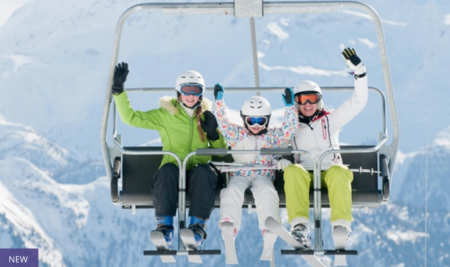Batawa Ski Hill: $29 for Day Lift Ticket With or $12 for Without Rentals (Up to 53% Off)
Today’s Groupon Toronto Daily Deal of the Day: Batawa Ski Hill: $29 for Day Lift Ticket With or $12 for Without Rentals (Up to 53% Off)
Buy now for only $
12
Value $25
Discount 52% Off
What You’ll Get
Choose from Four Options:
- C$12 for day lift ticket Without Rentals, valid wednesday – friday (C$25 value)
- C$29 for day lift ticket With Rentals, valid wednesday – friday (C$62 value)
- C$19 for day lift ticket Without Rentals, valid saturday, sunday (C$37 value)
- C$35 for day lift ticket With Rentals, valid saturday, sunday (C$66 value)
Day passes are valid from 9am-4pm.
This is a limited 3-day only sale that will expire at midnight on Tuesday, November 8, 2015.
Click here to buy now or for more info about the deal. Quantities are limited so don’t miss out!
The Fine Print
Promotional value expires Mar 19, 2017. Amount paid never expires. Limit 2 per person, may buy 2 additional as gifts. Valid only for option purchased. Rentals subject to availability. Day passes are valid from 9am-4pm. Merchant is solely responsible to purchasers for the care and quality of the advertised goods and services.
Batawa Ski Hill
http://batawaskihill.com/
99 Ski Club Lane
Quinte West, ON K0K 1E0
+16133986568
Traits of Good Snow: The Science Behind a Perfect Powder Day
It’s always possible to ski or snowboard as long as there’s snow on the ground, but what makes the best snow? Read on to learn the factors that make perfect conditions on the slopes.
Champagne snow. Blower powder. Gnar pow. Skiers and snowboarders have no shortage of poetic colloquialisms to describe the ethereal quality of freshly fallen snow. Light, fluffy powder is coveted because it makes people feel as if they’re floating down the mountain, a snowy mist erupting from their skis like the spray from a shaken bottle of champagne. Despite its heavenly quality, good powder isn’t just caused by angels spilling a box of packing peanuts—there’s hard science involved, too.
To quantify the caliber of snow powder, skiers use the snow-to-liquid ratio, which compares the depth of a layer of snow to the depth of water the same snow would take up if it melted. The higher the ratio, the less water contained in the snow, and the lighter the powder. For average snow, the ratio is about 10:1—meaning 10 inches of snow would melt into 1 inch of standing water—and the ratio for the fluffiest, most perfect snow might be as high as 30:1. Although the snow-to-liquid ratio can be hard to predict, feathery powder is most likely to fall on a day that meets two conditions. First, it must be quite cold (ideally, between 0 and 10 degrees at the summit or higher) so as to foster the formation of dendrite crystals in the snowflakes. Second, there should be little to no wind, as gusts stronger than 15 miles per hour can cause the flakes to collide as they fall, thus ruining their natural volume and packing them more closely together.
Click here to buy now or for more information about the deal. Don’t miss out!

